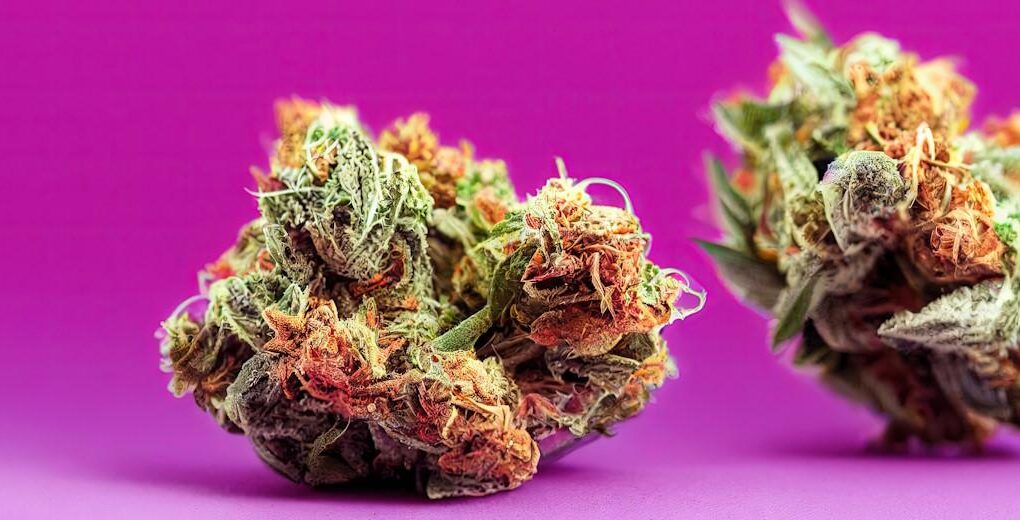The Hidden Toll of Cannabis: Unveiling the Negative Impacts of Weed
In the vibrant tapestry of modern society, cannabis stands out as both a symbol of liberation and a subject of heated debate. While its widespread acceptance has heralded new conversations about medicinal benefits and recreational use, there lies a complex narrative often overshadowed by the green haze of enthusiasm. As we traverse the landscape of public opinion, legal frameworks, and health discussions, it becomes essential to illuminate the less-discussed repercussions of cannabis use. From cognitive impairments to mental health challenges, the negative effects of weed warrant careful examination. In this article, we will explore the multifaceted dimensions of cannabis consumption, seeking not to vilify but to understand the potential hazards that accompany its allure. Join us as we peel back the layers of this multifaceted issue, revealing a clearer picture of the plant that has captivated millions around the globe.
Table of Contents
- Understanding Cognitive Impairments Linked to Cannabis Use
- The Impact of Marijuana on Mental Health and Emotional Wellbeing
- Exploring the Connection Between Cannabis and Dependency Issues
- Practical Strategies for Responsible Use and Harm Reduction
- Q&A
- In Summary
Understanding Cognitive Impairments Linked to Cannabis Use
The relationship between cannabis use and cognitive impairments has generated extensive discussion within both scientific and public circles. Regular consumption of cannabis, particularly in adolescence, has been linked to potential declines in various cognitive functions. These may include:
- Memory Problems: Users may experience short-term memory loss, making it challenging to recall information or learn new concepts.
- Attention Deficits: Difficulties in maintaining focus or rapidly shifting attention can hinder academic or occupational performance.
- Lowered Problem-Solving Skills: Impairments in critical thinking and decision-making abilities can compromise everyday choices.
Research indicates that these cognitive impairments may stem from the active compounds in cannabis, particularly THC, which interacts with brain receptors and alters neurotransmitter activity. A closer examination reveals how these effects manifest over time:
| Impact | Duration |
|---|---|
| Short-term Memory Loss | Minutes to hours after use |
| Altered Attention Span | Hours after use |
| Cognitive Decline (Long-term Users) | Months to years |
Such findings highlight the necessity for awareness regarding the potential cognitive risks associated with regular cannabis consumption, urging both users and healthcare providers to take these implications seriously.
The Impact of Marijuana on Mental Health and Emotional Wellbeing
The relationship between marijuana use and mental health is complex and multifaceted. While some individuals use cannabis for its purported therapeutic benefits, research has consistently highlighted potential drawbacks, particularly regarding emotional wellbeing. Regular use can exacerbate symptoms of anxiety, depression, and paranoia. Additionally, marijuana has been linked to cognitive impairments, which may lead to difficulties in concentration and decision-making, further impacting one’s emotional state over time. Understanding these effects is crucial for those who might view marijuana as a harmless escape from stress.
Moreover, the social context in which marijuana is consumed can also influence its impact on mental health. Factors such as environment, peer pressure, and personal history play significant roles in shaping user experiences. Frequent users may find themselves trapped in a cycle of dependency where emotional highs are followed by pronounced lows, often resulting in a decline in overall emotional resilience. The following table summarizes some negative emotional outcomes associated with marijuana use:
| Emotional Outcome | Description |
|---|---|
| Anxiety | Increased feelings of nervousness and worry. |
| Depression | Heightened feelings of sadness and hopelessness. |
| Paranoia | Intense feelings of distrust and suspicion. |
| Emotional Blunting | Diminished ability to feel emotions fully. |
Exploring the Connection Between Cannabis and Dependency Issues
The relationship between cannabis and dependency issues is complex and multifaceted. While many users consume cannabis recreationally or for medicinal purposes without apparent problems, a significant number may experience difficulties. Research indicates that a portion of cannabis users may develop a pattern of dependency, marked by cravings and withdrawal symptoms upon cessation. This can lead to a cycle of increased use and associated consequences, which may include:
- Impaired daily functioning
- Heightened anxiety and mood swings
- Social isolation
- Decline in academic or occupational performance
Additionally, the method of consumption can influence the potential for dependency. For instance, users who consume cannabis through high-THC concentrates may be at greater risk compared to those who use lower-THC strains. Understanding this risk is crucial, as it allows individuals to make informed choices and engage in harm-reduction strategies. The table below summarizes the differences in dependency risks based on consumption methods:
| Consumption Method | Dependency Risk Level |
|---|---|
| Flower (Joint) | Low |
| Edibles | Medium |
| Concentrates (Wax, Oil) | High |
Practical Strategies for Responsible Use and Harm Reduction
When considering the complexities of cannabis use, adopting practical strategies can significantly and positively shape the experience. Engaging in responsible practices not only enhances personal well-being but also fosters a safer environment. Here are some effective approaches:
- Set Clear Intentions: Understand why you are using cannabis, whether for relaxation, socializing, or therapeutic purposes. This clarity helps tailor your experience.
- Start Low and Go Slow: Particularly for new users, beginning with a low dose allows for a more manageable experience and minimizes adverse effects.
- Select Quality Products: Choose cannabis from reputable sources to avoid contaminants and harmful additives. Lab-tested products offer a safer option.
- Stay Hydrated: Drinking water can alleviate some side effects like dry mouth and help maintain overall comfort during use.
In addition to individual strategies, fostering a supportive community around cannabis use is essential. Peer discussions can help dispel myths and share experiences to reduce the stigma associated with its consumption. Consider the following collaborative strategies:
| Community Strategy | Description |
|---|---|
| Education Workshops | Host events to inform users about safe consumption and potential risks. |
| Support Groups | Create spaces for sharing experiences and coping mechanisms. |
| Resource Sharing | Share trusted articles, guidelines, and literature on cannabis use. |
Q&A
Q&A: Understanding the Negative Effects of Weed
Q1: What are some of the immediate effects of using weed?
A1: When people consume marijuana, it can lead to various immediate effects such as altered sensory perception, impaired judgment, and decreased motor coordination. For some, it may also trigger anxiety or discomfort, particularly in novice users or in those who consume a high dose.
Q2: Can weed affect mental health?
A2: Yes, research has suggested a potential link between frequent marijuana use and mental health issues. Individuals with a predisposition to conditions such as anxiety, depression, or psychosis may find that marijuana exacerbates their symptoms or increases the risk of developing these disorders over time.
Q3: Is there a risk of addiction associated with weed use?
A3: Indeed, while not everyone who uses marijuana becomes addicted, studies indicate that about 9% of users may develop a dependency on it. This risk increases for those who start using at a young age or who use higher potency strains.
Q4: How does weed impact cognitive function?
A4: Prolonged or heavy marijuana use has been shown to impair cognitive functions such as attention, memory, and learning. These effects can be particularly pronounced in adolescents, who are still in critical stages of brain development.
Q5: Are there any physical health risks linked to weed consumption?
A5: Yes, smoking marijuana can harm lung health, as inhaling tar and other particulate matter can lead to respiratory issues. Additionally, there are concerns about the impact of marijuana on heart health, particularly in those with pre-existing conditions.
Q6: How can weed usage affect social relationships?
A6: Regular use of marijuana can alter interpersonal dynamics. Some individuals may find that their relationships suffer due to changes in behavior, communication challenges, or withdrawal from social activities. This can lead to feelings of isolation or conflict with family and friends.
Q7: Are there any potential long-term effects of weed on users?
A7: Long-term marijuana use may result in lasting changes to brain structure and function. For some individuals, this can manifest as decreased motivation, known as cannabis-induced amotivation. Furthermore, persistent usage might contribute to issues such as chronic anxiety or mood disorders.
Q8: How can individuals make informed decisions about weed consumption?
A8: To make informed choices, individuals should consider their personal health history, consult with healthcare professionals, and stay updated on research regarding marijuana’s effects. Understanding the variance in strains, methods of consumption, and potential legal implications is also essential for responsible use.
Q9: What resources are available for those struggling with marijuana-related issues?
A9: There are numerous resources for individuals grappling with marijuana use, including therapy, support groups, and hotlines. Organizations like the Substance Abuse and Mental Health Services Administration (SAMHSA) provide valuable information and can help connect individuals to local support services.
Q10: What is the takeaway regarding the use of weed?
A10: While many people use marijuana for recreational or medicinal purposes, it’s crucial to recognize potential negative effects. Being aware of the risks and making conscious, informed choices can help users navigate the complexities of weed consumption and its impact on their lives.
In Summary
In the grand tapestry of human experiences, the threads of cannabis use weave a complex narrative, rich with contradictions and consequences. As we’ve explored, the darker side of marijuana—its potential to impact mental health, impair cognitive function, and foster dependency—cannot be ignored. It serves as a reminder that even natural substances carry weighty implications that resonate far beyond individual choice.
As our understanding of cannabis continues to evolve, it is crucial to approach this topic with a balanced perspective. Exploring both its benefits and drawbacks ensures that we are equipped with the knowledge to make informed decisions. For those considering its use, staying vigilant about the potential adverse effects and recognizing the importance of moderation isn’t just wise—it’s essential.
Ultimately, the conversation about weed is not merely about regulations or trends; it’s about the well-being of individuals and communities. In navigating this multifaceted issue, let us tread with caution, empathy, and insight, fostering dialogue that prioritizes health, safety, and informed understanding. After all, in the pursuit of balance, awareness can illuminate the path ahead.



